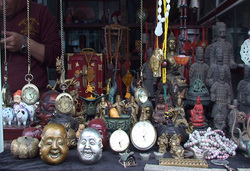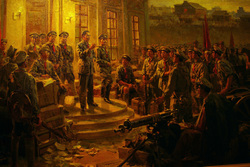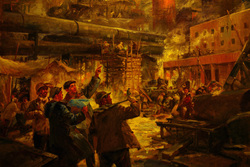By King’s Joy Hostel employee: Star
Every Monday between 7-9pm we have two local Beijing artists visit our hostel. The artists do amazing natural paintings and the other does calligraphy. And I shouldn’t just say “do”. They also teach it to anyone staying at the hostel who is interested in learning, no cost. Here’s a short video to give you the idea:
The two artists are very patient and are happy to teach anyone wanting to learn. Mondays are quieter in Beijing (after a crazy weekend of partying for instance). So I recommend eating at the Chinese restaurant on the hostel’s first floor, or at the western restaurant on the 6th floor (amazing views of the hutongs, Tiananmen and the Forbidden City, and the rest of Beijing for that matter, can be seen from here) and then joining the artists for a relaxing but challenging experience trying traditional Chinese art forms.
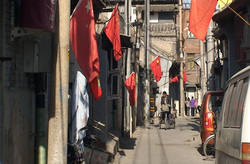
By King’s Joy Hostel guest: Brendan
I know there is the Forbidden City, the Temple of Heaven, Tiananmen, et cetera, et cetera, et cetera, but there is one place I found right below the hostel’s windows that was by far my favorite area to explore: the hutongs. Hutongs are small, traditional alleyways, going back as many as 500 years ago (so when you are on those streets it’s amazing to think of all the generations of feet that passed those same lanes). Also, you notice that for the most part the hutongs run east-west rather than north-south. A large reasoning to this was to prevent the cold Siberian winds from blowing through from the north in the winter. The hutongs are also nice because you escape high buildings for a while and feel grounded. The hutongs around King’s Joy are quite different to other hutong areas I visited in Beijing because they felt more ‘working class.’ They were busier and contained more shops and restaurants, but at the same time were not overly commercial.
Rather than tire myself out walking for miles through the alleyways, I just rented a bike from King’s Joy Hostel (30 RMB) and set out. I got lost for sure, but it was easy and quick to find how to get out again thanks to being on wheels. One place I recommend visiting is Liu Li Chang. It’s north east of the hostel inside the hutongs, about a kilometer or so away. There you can see all sorts of trinkets, antiques and art work (and even artists in the process of making their art). Just on this small section of the hutongs, I spent more than an hour checking everything out.
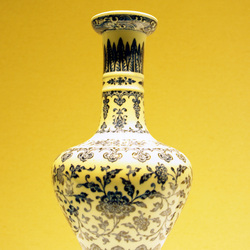
China’s national museum, located along Tiananmen Square (and therefore about 20 minutes by foot from (
King's Joy Hostel), just reopened and I had to check it out. Apparently, it’s the largest museum in the world, not in terms of stuff, but in terms of floor space. That is a kind of an odd claim, but maybe it’s so big in the hopes of what will be put inside if for the future. For now, it is empty compared to its size, but with that said, there are some great exhibits and my understanding is more are on the way. Photography isn’t allowed, but I did manage to sneak a couple shots off.
One place I didn’t shoot, but wish I did, was with the bronze works from the Shang Dynasty. If you read the award-winning book Oracle Bones by Peter Hessler, you’ll get some good background. Basically, they are one of the earliest known ‘dynasties’ in China, really a tribe of people that performed very sophisticated rituals. The heaviest ancient bronze artifact in the world, the Si Mu Wu Ding, is one of China’s most important pieces and is proudly displayed in the museum.
Apparently, there are more international exhibits going to be put on display. I checked out the exhibit on the ancient Incas. It was cool to see artifacts from another part of the world as a juxtaposition, even contrast, to all the Chinese artifacts displayed in the museum.
I also went through the Road to Rejuvenation. The large section of the museum portrays the official Chinese government’s perspective on its more recent history (1840 to the present). The museum makes some major omissions and limits perspectives on the history, but particularly I found the revolutionary artwork, which portrays Communist China’s historical narrative, intriguing.

